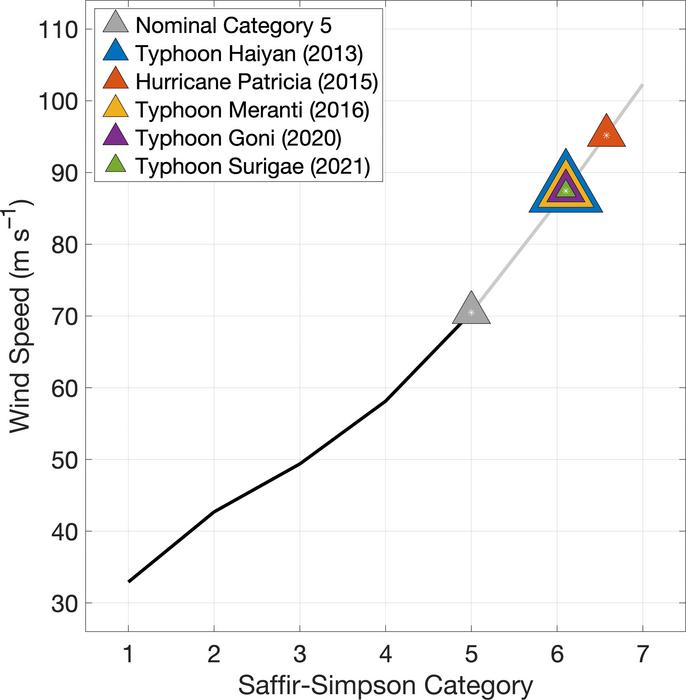Hurricanes have become so gnarly over the past decade that some scientists believe we need a new category to better reflect their intensity: Category 6.
Under the current Saffir-Simpson Hurricane Wind Scale, hurricanes are categorized on a scale of 1 to 5 based on their maximum sustained wind speed. A hurricane receives Category 5 status if it has sustained wind speeds over 252 kilometers (157 miles) per hour.
At Category 5 intensity, you can expect to see significant damage to property, including fallen trees and power lines, as well as destroyed houses. Most of the impact area in the wake of a Category 5 storm won’t be habitable for weeks or months.
In a new study, researchers have noted how recent years have seen several storms that far exceeded this speed threshold. As such, they propose that authorities should think about introducing a new category – Category 6 – to define hurricanes and typhoons that have wind speeds exceeding 309 kilometers (192 miles) per hour.
Since 2013, at least five storms have already reached the hypothetical Category 6 threshold: Hurricane Patricia, Typhoon Meranti, Typhon Goni, Typhoon Haiyan, and Typhoon Surigae.
For instance, Hurricane Patricia hit Mexico and parts of Texas in October 2015. With sustained wind speeds of up to 346 kilometers (215 miles) per hour, it holds the title of the most powerful tropical cyclone ever observed in the Western Hemisphere.

The wind speed of a Category 5 storm compared to five other storms seen since 2013.
Image credit: James Kossin and Michael Wehner
With climate change already increasing the ferocity of storms across the world, this breed of storm is set to become increasingly more common in the years and decades ahead.
Climate change can impact hurricanes and typhoons in a myriad of ways. Warmer sea surface temperatures provide more energy for hurricanes, potentially leading to increased intensity and faster wind speeds. Simultaneously, climate change may slow down the movement of hurricanes as they drift across geographical regions. This allows the hurricane to lurk over one area for longer, thereby increasing the amount of damage it can inflict.
“Anthropogenic global warming has already significantly increased surface ocean and tropospheric air temperatures in regions where TCs [tropical cyclones] form and propagate. The resulting increases in available sensible and latent heat energy increases the thermodynamic potential wind intensity of these storms,” Michael Wehner – from the Lawrence Berkeley National Laboratory in California – and James P. Kossin – from the University of Wisconsin-Madison – conclude in their study.
“Here, we introduced a hypothetical extension to the Saffir–Simpson hurricane wind scale to reflect that the most intense TCs are becoming more intense and will continue to do so as the climate continues to warm,” the study authors add.
While the proposed storm categorization system hasn’t yet been adopted by the National Oceanic and Atmospheric Administration (NOAA) or any other official agency, it’s not the first time researchers have floated the idea of extending the Saffir–Simpson hurricane. As the climate crisis deepens, it’s looking increasingly likely that these proposals could be come a reality.
“This study picks up on a key feature of these classification systems, that the most extreme category (5) is open-ended – in this scale, anything above 252 km/h. This is problematic in the context of communicating expected increases in peak tropical cyclone wind speeds under climate change. Accordingly, this study explores how tropical cyclone classification would change if a Category 6 threshold was introduced at 309 km/h,” Dr Daniel Kingston, a senior lecturer at the University of Otago in New Zealand, who was not directly involved in the study, said in a statement.
“Five storms have already breached this hypothetical Category 6 threshold, and all have occurred since 2013 – with the threshold expected to be breached increasingly under ongoing climate change,” he added.
The study is published in the journal Proceedings of the National Academy of Sciences
Source Link: Hurricanes Are Now So Strong, Scientists Want To Introduce "Category 6" Storms